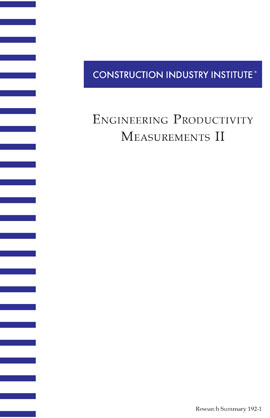
Member Exclusive
Benchmarking Productivity Metrics
Event Date
Jul 31, 2002
Type
Conference Presentation
Research Team
RT-192
Slides
34
Topic
Engineering Productivity Measures II
DOCUMENT DETAILS
Abstract
Filters & Tags
Abstract
Filters & Tags
Knowledge Area
Project Phase
Project Function
Industry Group
Research Topic
Engineering Productivity Measures II
Keywords
Installed Quantities,
Productivity,
Engineering,
Rework,
Scope Creep,
Effectiveness Factor,
Scope Factor,
Complexity Factor,
Input Quality Factor,
rt192



